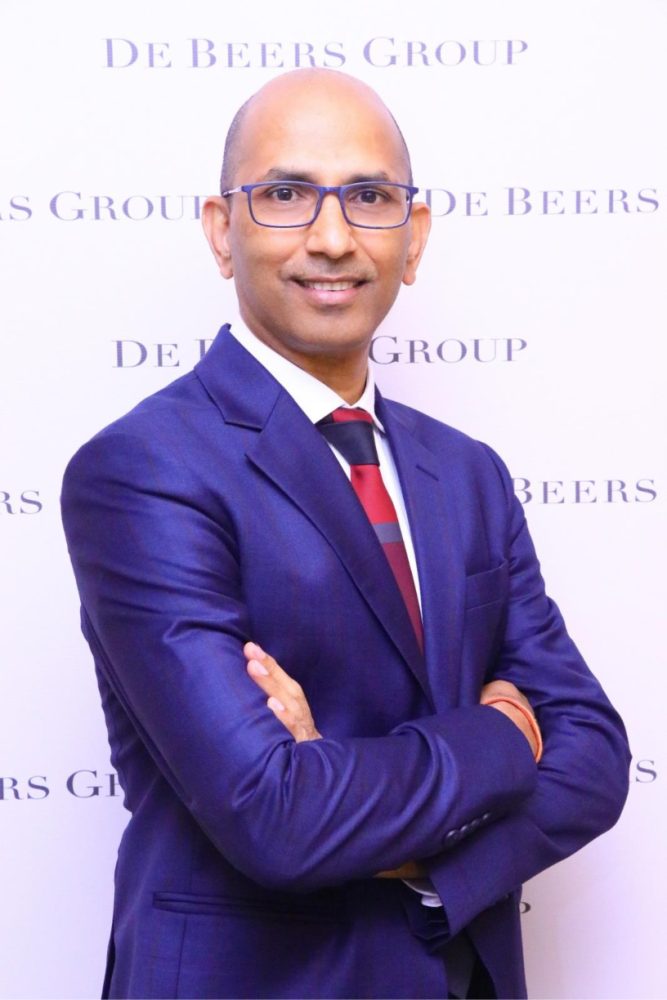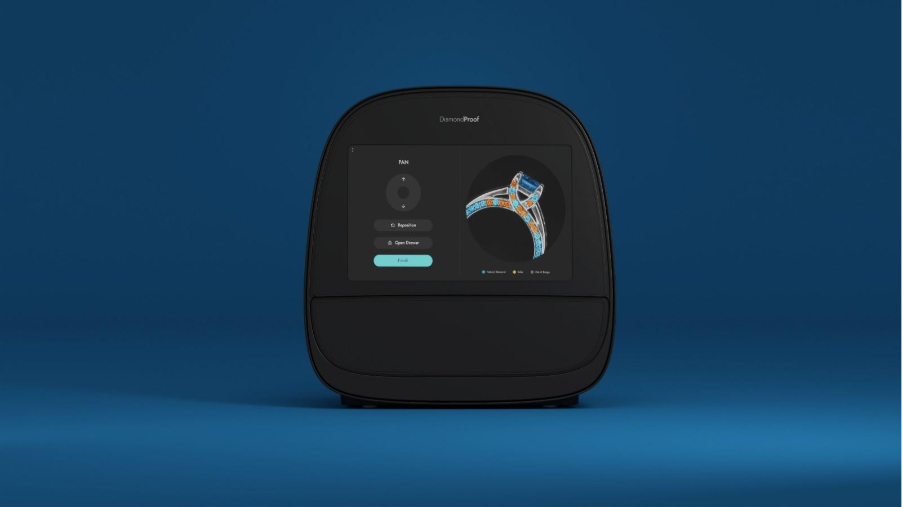Amit Pratihari, Managing Director, De Beers India, speaks to Solitaire International about why diamond jewellery will be at the heart of India’s retail story and what to expect at IIJS Premiere 2025.

What are your expectations from IIJS Premiere 2025? Will De Beers be launching any new initiatives for the Indian market?
IIJS Premiere is one of the most important events for India’s gem and jewellery sector. Every edition gets stronger, offering relevant market insights and setting the tone for the festive season. For De Beers, this year will be particularly significant. We’ll be unveiling several initiatives including our ‘Show & Tell’ experience, where we’ll demonstrate innovations like Tracr, new consumer campaigns, and the work of our science and technology division in detection solutions.
Most importantly, we will see the full scale launch of the INDRA project, which is in partnership with GJEPC. It’s now going live with complete content and operational functionality, and we already have over 2,700 retailers registered—with another 1,000 expected by the show.
You have announced plans to open over 100 Forevermark exclusive stores. What’s your long-term vision for the brand?
We’ve completely remodelled Forevermark’s retail strategy. We’re moving away from a multi-brand presence, which has been scaled down, to a dedicated exclusive store format. Our goal is to have 100 such stores across India by 2030. The first stores in Delhi and Mumbai will open by mid-September this year. We’re adopting a cluster-based rollout—starting with 7-8 stores each in Delhi and the Mumbai-Thane region—before expanding to South India in 2026. Tier 2 and Tier 3 cities are a clear focus for us, and we’re combining physical stores with an e-commerce platform to maximise reach.
How is De Beers handling the transition for existing partners?
We’ve scaled down our multi-brand store presence and are offering these partners the option to engage with the Institute of Diamonds, which we relaunched in January. The Institute will have a strong presence at IIJS, offering services previously available only to internal brands.

What is the five-year vision for INDRA?
Our objective is to grow the penetration of natural diamonds in India’s jewellery market from under 10% to 15% over five years. INDRA equips retailers—especially smaller ones—with the right information, sourcing avenues, and marketing tools. The platform supports customisable consumer campaigns for retailers, and will be available in nine Indian languages to cater to regional markets.
How is De Beers tailoring its approach to younger, digital-first consumers?
Our campaigns are designed with millennials and Gen Z in mind, with a strong digital-first focus. That said, we still invest in traditional media where it commands leadership. Our storytelling aligns with Indian rituals but brings in modern relevance—like the ‘Second Ear Piercing’ campaign. We’re also customising campaigns by region, using local languages to ensure cultural connect.
Given global market headwinds, what’s your outlook for India?
India is a bright spot. The domestic gems and jewellery market is currently valued at $85-90 billion, and could touch $120 billion by 2030. A recent Deloitte report projects it will reach $235 billion by 2035. As India grows from a $4 trillion currently to an $8 trillion economy by 2030, disposable incomes and aspirational spending will rise—especially on categories like diamond jewellery. So technically, in the next five years we we’re adding one more India to the economy.

Is De Beers aligning its investments accordingly? What kind of budget have you allocated for India?
Yes, India is a strategic priority. We’re investing significantly across consumer marketing, retail expansion, detection technology, and retailer education. While I can’t share a specific number at this stage, I can confirm that our India budget reflects the country’s position as the second-largest diamond-consuming market globally. Our campaigns will be ongoing, and you’ll see consistent investment throughout the year.
Tell us about plans to leverage technology in Indian retail stores to reinforce consumer trust?
We’re offering tools like DiamondProof and DiamondDetect—advanced detection machines that verify the authenticity of diamonds in-store. Additionally, our Institute of Diamonds is now open to the wider trade, offering third-party grading services exclusively for natural diamonds—the only lab in the world doing so.
Could you share more about Tracr?
Tracr is our blockchain-based solution that enables traceability from mine to market. It’s becoming increasingly important given G7 sanctions and the rising demand for source verification among consumers and brands. At IIJS Premiere 2025, we’ll highlight how Tracr supports transparency and futureproofs the diamond business.
Are US tariffs or G7 policies still posing challenges?
Initial concerns around US tariffs and G7 restrictions have now stabilised. The industry is adapting, and business is moving forward.
What kind of policy support or reforms from the Indian government could further boost the natural diamond sector’s growth?
GJEPC is doing commendable work in representing the industry to the government. We continue to work closely with them on creating a supportive policy environment for natural diamonds.
Gold prices are at an all-time high. Does that work in favour of diamonds?
Absolutely. With gold prices continuing to rise, diamonds are emerging as a more attractive option within the same budget range. Consumers who may have previously prioritised gold are now considering diamonds more seriously—especially as diamond prices have remained relatively stable in recent months. This shift presents a significant opportunity for the trade to position diamond jewellery as a compelling value alternative.
Any final message for the industry ahead of IIJS?
India holds immense potential. Diamond jewellery will be the growth indicator of the country – it will play a key role in the country’s retail evolution. But the consumer has changed—they’re buying differently now. As an industry, we need to be agile, stay attuned to local needs, and adapt quickly to capture this once-in-a-generation opportunity.

